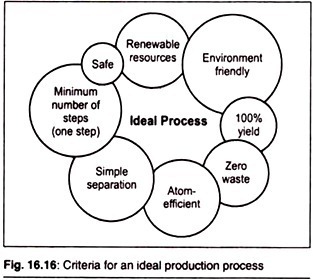ADVERTISEMENTS:
In this article we will discuss about T. chebula:- 1. Description of T. chebula 2. Distribution of T. chebula 3. Parts Used 4. Collection and Preparation 5. Microscopical Character 6. Uses 7. Average Does 8. Adulterant 9. Trade.
Contents:
- Description of T. chebula
- Distribution of T. chebula
- Parts Used in T. chebula
- Collection and Preparation of T. chebula
- Microscopical Character of T. chebula
- Uses of T. chebula
- Average Does of T. chebula
- Adulterant of T. chebula
- Trade of T. chebula
ADVERTISEMENTS:
1. Description of T. chebula:
Medium trees with more or less drooping branches; upto 25 mtr. high in moist region but dwarfish in drier area; oark dark brown, exfoliating in woody scales. Leaves alternate or subopposite, elliptic, with a pair of large glands at the top of the petiole, 7-18 cm. long .with a short petiole.
Flowers very small, yellowish white, in terminal spikes, regular and hermaphrodite. Calyx campanulate, lobes 5, valvate. Corolla absent. Stamens 10, inserted on the calyx cup with an epigynous disc.
Ovary monocarpellary, inferior, with 2-3 ovules. Drupe ellipsoid or obovoid or sometimes ovoid, 2-4 cm. long, yellow to orange-brown, sometimes tinged with red or black, hard when ripe, faintly 5-ribbed, Seed hard pale yellow.
2. Distribution of T. chebula:
All over India in the plains as well as on the hills at lower elevations.
3. Parts Used in T. chebula:
Dried fruits, which are loosely called nuts although in reality they are drupes. Myrobalans are marketed in the form of whole nuts or the dry pulp of the crushed nuts or solid and spray dried extracts.
ADVERTISEMENTS:
4. Collection and Preparation of T. chebula:
Mature fruits are collected by shaking the trees during January to April. These are dried in thin layers in shade. For medicinal purpose green fruits ire also picked up and these are dried, when they turn black. Very young fruits are also valued in medicine.
Description of the drug:
Mature fruits yellowish brown, 2t4 cm long, wrinkled and with 5 faint ribs, hard and stony; seed light yellow, rough, 15-25 mm. long; pulp 3-4 mm. thick, odourless, with an astringent but later sweetish taste. Young fruits deep brown to black, elongated, tapering on both sides, often compressed, hard, with longitudinal wrinkles and ribs, odourless, astringent and bitter.
ADVERTISEMENTS:
5. Microscopical Character of T. chebula :
It shows the epicarp of several layers of corky cells, often containing a few starch grains. Mesocarp formed of round parenchymatous cells having brownish cell contents. There are numerous stellate crystals of calcium oxalate.
Starch is absent. Parenchymatous cells have cellulose walls. In semi mature fruits isolated vascular strands of vessels are intermingled with parenchymatotis tissues. Vessel walls have pitted thickening. The powder shows pitted vessels rounded parenchymatous cells, containing resins and oils of brownish colour. Starch is absent.
6. Uses of T. chebula:
ADVERTISEMENTS:
Myrobalan is more important as a tanning material. In India and adjacent countries it is considered to be an important drug and is credited with laxative, stomachic, toxic and alterative properties. Used as a dentifrice it cures bleeding gum.
7. Average Does of T. chebula:
30-60 gr.
8. Adulterant of T. chebula:
ADVERTISEMENTS:
Fruits of T. citrina Roxb. ex Flem. resemble those of T. chebula and are often sold in market as fruit of chebulic myrobalan.
9. Trade of T. chebula:
Production in India is about 1 lac tonne of dried fruit annually. Major part of the produce meets the internal requirement while 6, 40,000 kg. of fruits and 3, 06,000 kg of the extract are exported outside.

